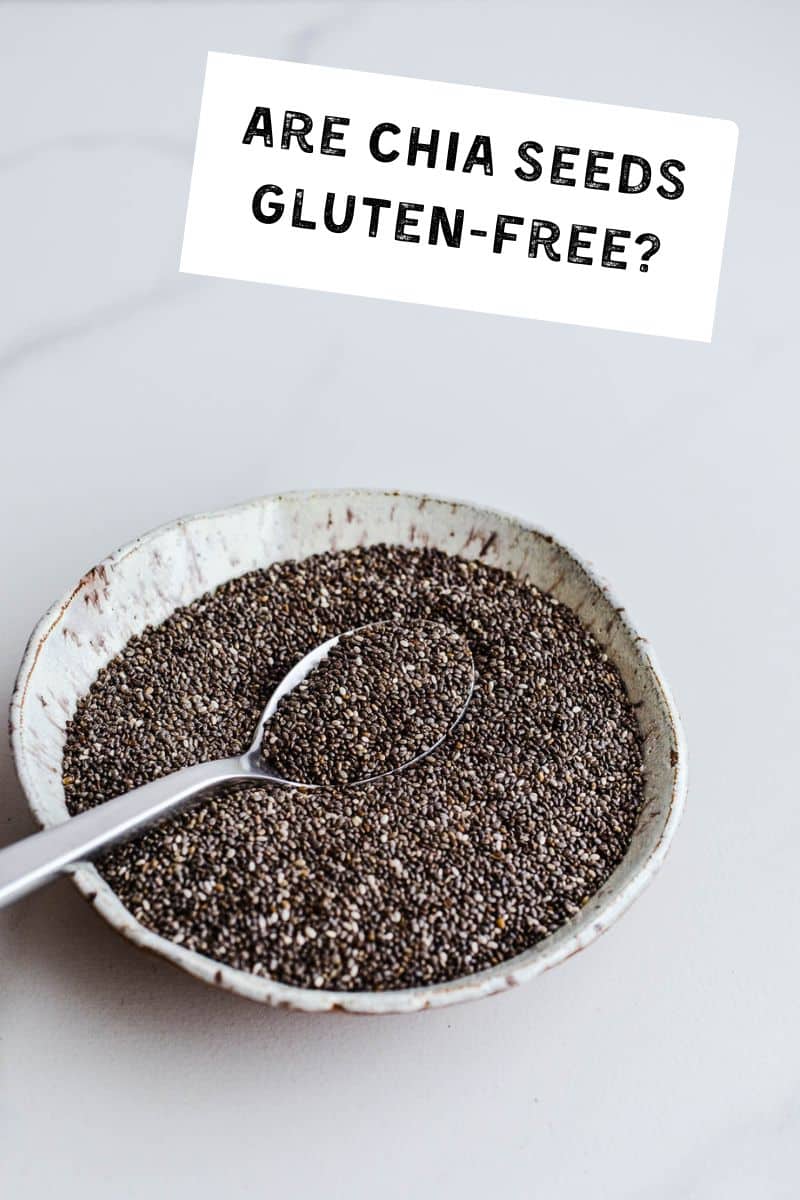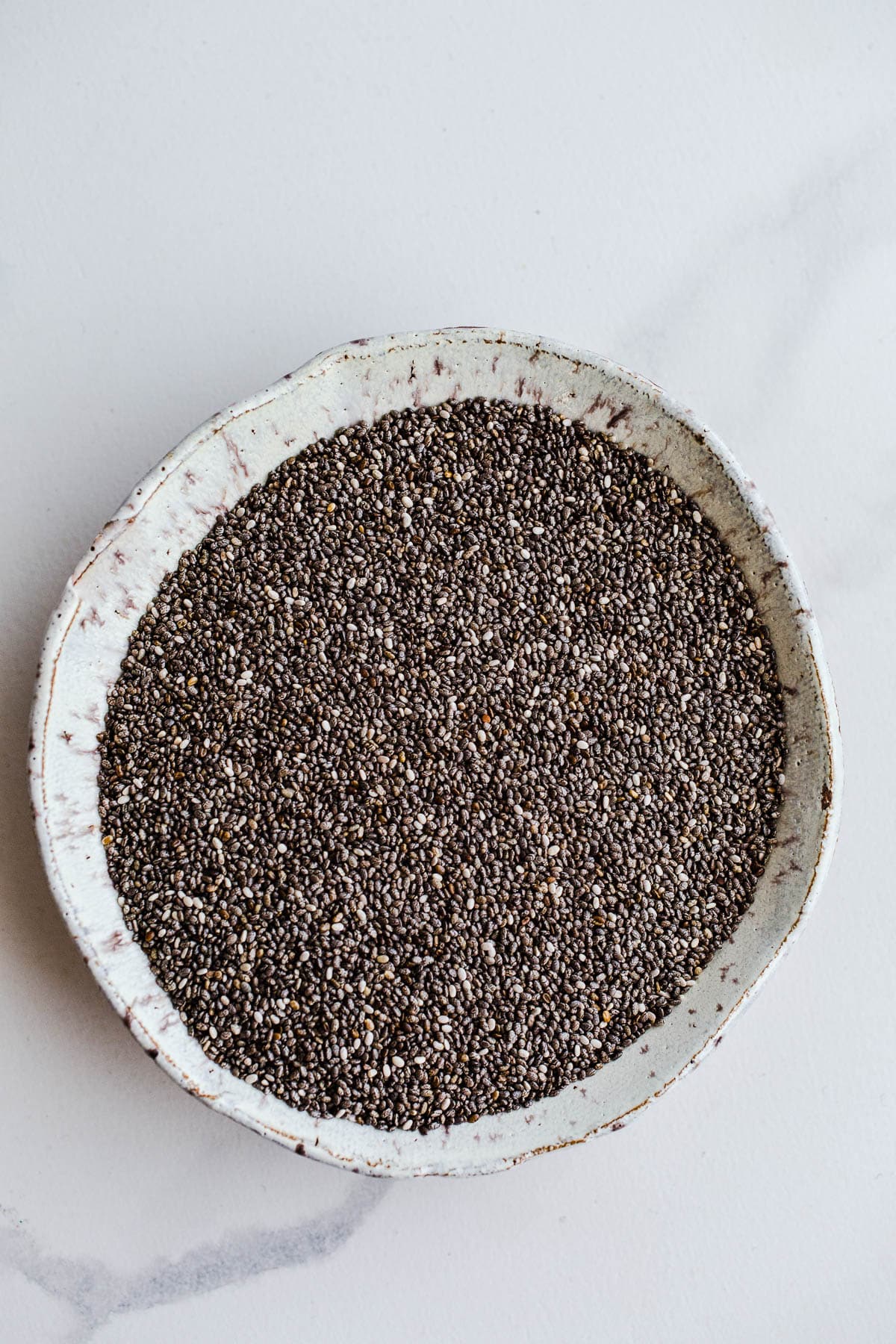Chia seeds are highly nutritious, a great pantry staple, and are used in a variety of recipes. But are they gluten-free?

Are chia seeds gluten-free? In their pure, natural form, yes!
The tiny seeds come from a desert flowering plant called (Salvia hispanica) originating from the Guatemala and Mexico regions of Central America. Salvia hispanica is part of the mint family (Lamiaceae).
This ancient grain packs a powerful nutritional punch, and for good reason. Boasting healthy fats, protein, and versatility in a variety of recipes, they are a great addition to a gluten-free pantry.
Can you eat chia seeds with Celiac disease?
Since chia seeds are naturally gluten-free, they are safe for those with Celiac disease, gluten intolerance, or non-Celiac gluten sensitivity.
It is important to read the ingredients label for the allergen statement. This is crucial in determining whether a product has been made in a facility that processes other gluten-containing ingredients.
Are chia seeds vegan?
If you are curious whether chia seeds are also dairy-free and vegan, the answer is also yes! 100% pure chia seeds are without dairy or animal products.
Which chia seeds are certified gluten-free?
While any 100% pure chia seeds are naturally free of gluten, some brands manufacture their products in facilities that process other gluten-containing grains and ingredients. Check the allergen statements on the packaging for information regarding cross-contamination.
If you are concerned about potential cross-contamination, the following brands have the certified gluten-free label (in the United States):
- Anthony's
- Bob's Red Mill
- Nativas (not certified, but tests for less than 20ppm of gluten)
- Mayorga
What are the two types of chia seeds?
There are both white and black chia seeds. So what is the difference between them?
There is virtually no difference between the two colors of seeds. Both are highly nutritious with the black variety having a slightly larger amount of fatty acids.
Health benefits
In addition to being safe for a gluten-free diet, these humble seeds have quite the nutritional value.
One ounce of the little seeds equals about 2 tablespoons. In a one-ounce serving, there are 4.6 grams of protein, a great source of insoluble fiber at 9.75 grams of fiber, a significant amount of omega-6 and omega-3 fatty acids, B vitamins, and essential amino acids.
Uses
Chia seeds are used in a variety of gluten-free foods making them a versatile ingredient for gluten-free cooks. So, how are they prepared?
- Just like the use of nut butter, psyllium husk, and flax seeds in gluten-free baking, water and ground chia gel together to make an excellent egg substitute in muffins, cookies, and bread.
- Adds crunch and texture to crackers and granola bars.
- Whisk together coconut milk, vanilla extract, and a little maple syrup or sweetener of choice for an easy and healthy chia pudding.
- Add gluten-free oats, almond milk, or milk of choice, plus chia and you got delicious overnight oats.
- A healthy addition to your favorite smoothie or smoothie bowl.

Helpful tips
- The brand information in this article comes from the brand websites at the time this article was written. Going direct to the brand website is the fastest way to get the most up-to-date allergen information on a specific product.
- If cross-contamination is a concern, make sure you check the product label for information regarding its gluten-free designation. If it is not clear, always contact the brand directly.
- Remember, just because a product does not use gluten-containing ingredients, does not necessarily mean it wasn't processed in a facility that produces foods with gluten ingredients.


Leave a Reply